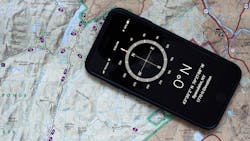How Bluetooth 5.1, UWB, and Wi-Fi 802.11az Empower the Next Frontier of Micro-Location (Download)
Using wireless technologies for positioning isn’t new. However, the level of accuracy required has evolved over the years upon identification of new location-based use cases.
A GPS system, for example, can achieve roughly between a 5- to 20-meter level of accuracy, depending on signal conditions. This is sufficient when driving around to locate a particular building, but a GPS level of accuracy can’t meet the needs of finding, say, a specific shelf in a store or point to the right painting in a museum tour.
